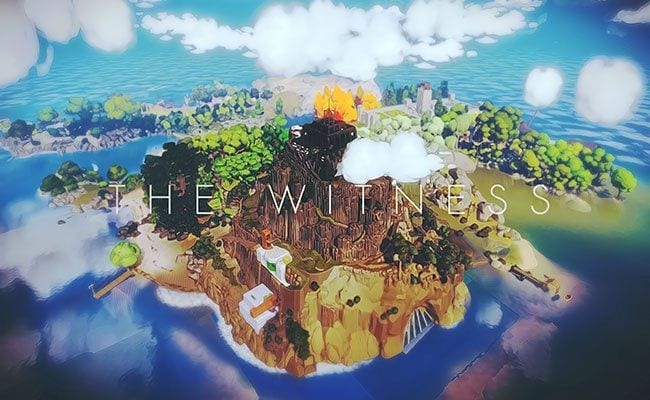
The Witness is a game with no tutorials, no overt explanations. It is a puzzle game, but it makes no deliberate effort to explain how its puzzles work. It teaches only through experience and observation.
This is clear from the outset of the game, in which the player finds him- or herself looking down a tunnel at a door from a first person perspective. The game doesn’t explain that WASD is used to move, nor anything about who you are or where you are. You just need to play around with the keyboard and approach the door.
The door opens onto the island on which The Witness takes place. However, before you are let out into this open world, you find yourself trapped in a stone enclosure. Doors out are locked, but several panels with grids on them are wired to the main door. By playing around with the grids on the panels, you begin to learn how all progress is made in the game. You learn the rules through play.
And through observation, of course. As you progress through more and more puzzles, it becomes clear that while many of the solutions can be come to through trial and error, most of the puzzles’ systems are understood best by considering how to best look at them. A different angle, a different view, a consideration of how this puzzle might relate to the last few puzzles that you’ve solved, all lead to coming to understand a complex set of systems and symbols that govern the rules of progress.
However arcane a puzzle may first appear, The Witness always loops back on a single article of faith, a faith in an observable phenomenon, a faith that with enough sensory observation, a solution is possible. At the center of everything in the game is the idea that understanding requires a witness.

A witness with patience only has to apply what can best be understood about that which is seen in order to fully explore what otherwise seems to be a foreign and alien universe. The game reinforces this idea through its few seemingly expository elements, excerpts of audio logs and videos that concern the topic of investigation and the importance of investigation to human life.
These expositions are not expositions about the game’s world, though. These are not the audio logs of Bioshock or the contents of books and scrolls found in The Witcher. They don’t explain a fictional world , they explain a philosophy of investigation that the game represents. They are the words of real life thinkers about how investigation of the building blocks of the universe are important to human culture. They are discussions of real life thinkers about how to explore the nature of self and selfhood.
In this sense, these documents, which seemingly provide no insight on the fictional universe of The Witness concern themselves with what the player is doing in that universe more clearly than layers of fiction could. They clarify what the world of The Witness is really all about, the importance of that curiosity to drive the human need to investigate, to explore, and to attempt to solve the puzzles and mysteries that surround them.
In a nutshell, The Witness is a celebration of empiricism, rationality, and critical thought, along with the direct experience of all of those things. It is not the first game that asks its player to learn by seeing or by doing or by seeing, then doing or by doing, then seeing, but it is the first game that I can recall playing that only concerns those things. The act of observing and learning in the world is the game’s method and its subject matter. The Witness extols the virtue of investigation, no matter where it might lead.

